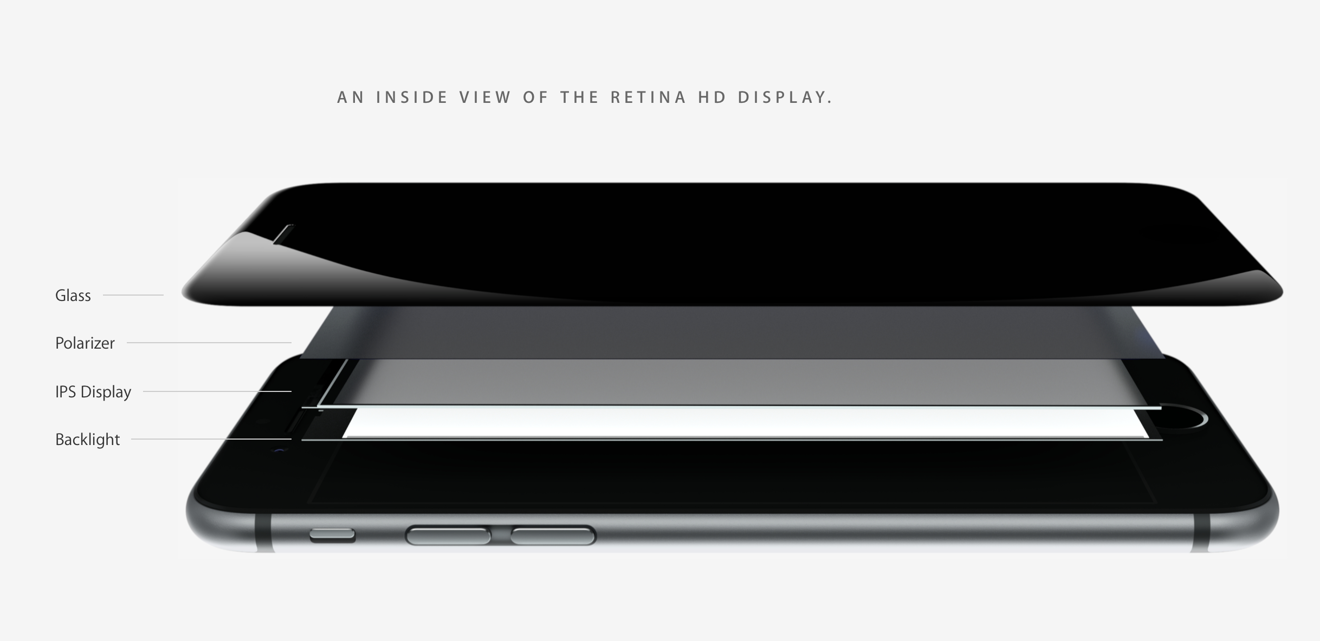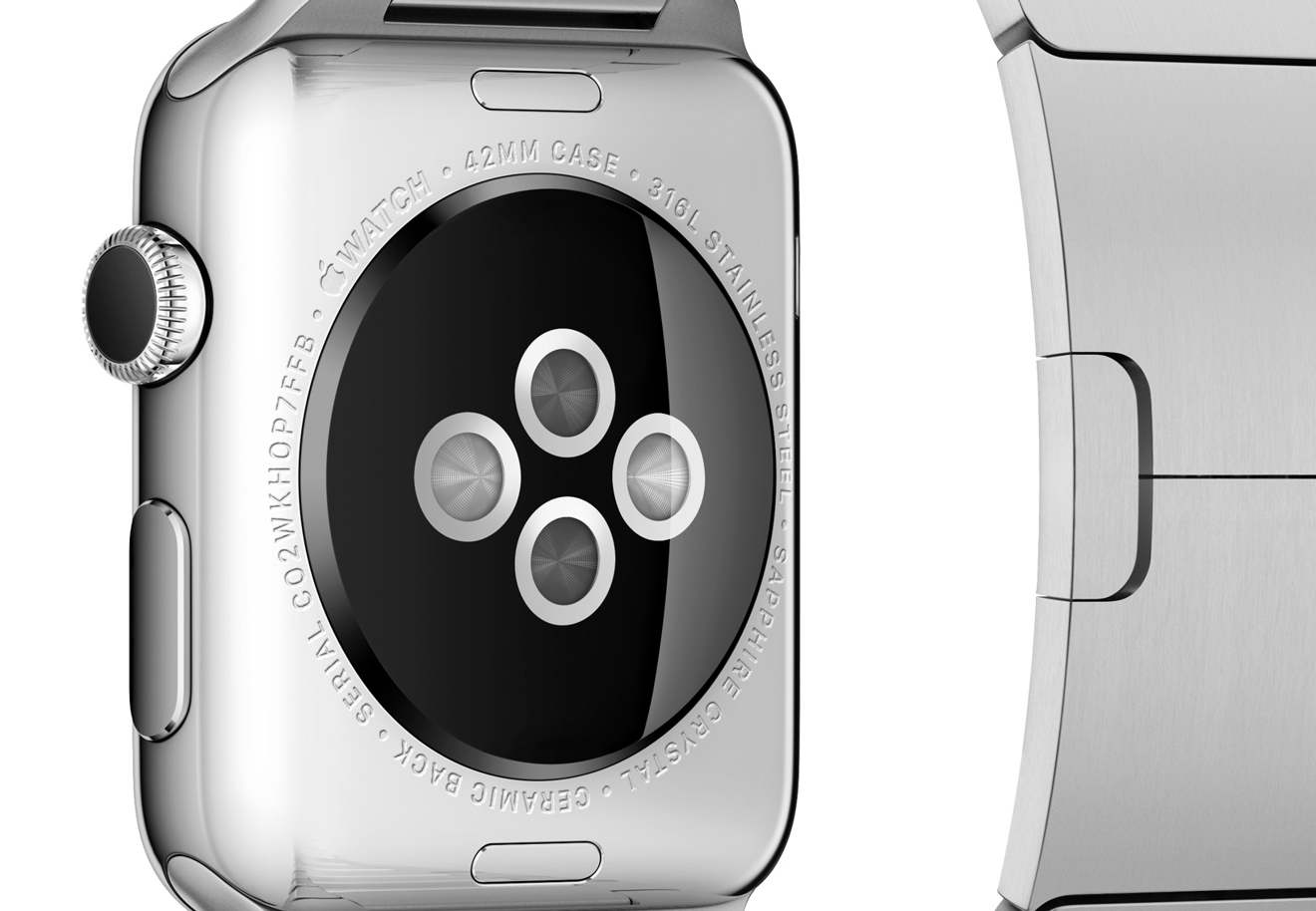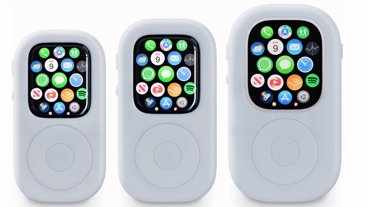Apple 'never' planned to use sapphire covers for iPhone 6 or iPhone 6 Plus - report
Last updated
Despite much wishful thinking on the part of enthusiasts and even members of the tech press, full sapphire screen covers were never in the cards for Apple's iPhone 6 or iPhone 6 Plus, a new report reveals.
Citing unnamed sources, Tim Bajarin of Time reported on Wednesday that sapphire was "never targeted for the iPhone 6 or iPhone 6 Plus." Customers holding out hope for a potential sapphire cover on next year's iPhone should also reconsider, as he revealed that the hardened material's role in future iPhone models "hasn't even been decided yet."
The reasons that Apple didn't use or even seriously consider sapphire for this year's iPhone are numerous. AppleInsider detailed many of the issues associated with sapphire back in June, including the facts that it's expensive, it's heavy, and it's prone to shattering when dropped.
Bajarin's report directly refutes one analyst who attempted to claim that sapphire missed the cut on the iPhone 6 and iPhone 6 Plus designs by a matter of "weeks," before last-minute issues led Apple to choose ion-infused Gorilla Glass. But that analyst, who focuses almost exclusively on Apple's relationship with sapphire maker GT Advanced Technologies, was supremely confident that every iPhone 6, iPhone 6 Plus and Apple Watch would all include sapphire covers, which they do not.
Investors and tech enthusiasts alike were excited by the news of a $578 million contract between Apple and GT Advanced Technologies for sapphire. They hoped that the two companies may have secretly discovered some sort of breakthrough that would allow Apple to build entire iPhone displays, and potentially even iPads, out of the material this year, all while keeping up with overwhelming consumer demand for those products.
But Apple already needs plenty of sapphire for existing products: The iPhone 6 Plus, iPhone 6, and iPhone 5s all feature sapphire Touch ID home buttons, while all three models along with the iPhone 5c have sapphire camera lens covers. Apple is also expected to introduce a new iPad Air and iPad mini this fall with Touch ID, presumably covered by sapphire as well.
And next year, two of three Apple Watch models will also feature sapphire covers, and the material will also be used on the back to protect the wearable device's heart rate sensor.
The hype — Â and ultimate disappointment — Â around sapphire recalls another exclusive Apple materials deal that excited fans: a unique metal alloy dubbed Liquidmetal. AppleInsider first discovered back in 2010 that Apple had entered into a $20 million exclusive arrangement to use amorphous metal alloys with unique atomic structures that could make products thinner, lighter, and resistant to wear and corrosion.
While the idea of Liquidmetal was exciting, the reality of the material is that it's too unique and too expensive to produce in such large quantities. But that didn't stop the rumor mill from imagining anything from iPhones to entire MacBooks made out of Liquidmetal.
On Wednesday, even Bajarin admitted he had bought into the sapphire hype and expected the material would be used as a screen cover for the iPhone 6 and iPhone 6 Plus. He then went on to explain many of the well-established problems associated with sapphire, including weight, cost, durability, and even battery life, as the material allows less light to pass thorugh.
"All of us," Bajarin wrote, "need to be more careful before jumping to conclusions in areas like this."
 Neil Hughes
Neil Hughes















 Amber Neely
Amber Neely
 Thomas Sibilly
Thomas Sibilly
 AppleInsider Staff
AppleInsider Staff
 William Gallagher
William Gallagher
 Malcolm Owen
Malcolm Owen
 Christine McKee
Christine McKee









55 Comments
This makes sense. There doesn't seem to be much of an upside to sapphire compared to Apple's new ion-infused glass anyway. People would rather a screen that is lighter, clearer, brighter, and less prone to shattering anyway. As far as apple's partnership with GT, demand for iPhone 6, iPads, and the future Watch could all exhaust the sapphire supply without even adding iPhone screen panels to the mix.
As long as people think iPhone displays they don't think AppleWatch, likely a planted rumor to distract from the watch... ...and lead competition astray.
Some of the problems mentioned in Tim's article aren't exactly correct. A major one which I'll highlight is the cracking mode. The mode mentioned has to do with multi crystalline structures, where a scratch can open to a crack along crystal surfaces. But these are single crystal boules, just as with single crystal metals, this is much stronger. I think it still needs to be investigated. But phone design plays just as much into whether a screen will crack, as the material itself. When Apple went from the 4 series to the 5 series, the percentages of cracked screens dropped dramatically. The reason is due to the case design, which protects the corners of the screen. With the 6, we're seeing a return to an unprotected edge. Since there is still just one glass surface, we should see less cracking than with the 4 series. But just as the significantly lower weight of the 5 series also contributed to less cracking, the higher weight of these larger models will increase the chances. It's why I always use a silicone case.
[quote name="blackbook" url="/t/182330/apple-never-planned-to-use-sapphire-covers-for-iphone-6-or-iphone-6-plus-report#post_2600280"]This makes sense. There doesn't seem to be much of an upside to sapphire compared to Apple's new ion-infused glass anyway. People would rather a screen that is lighter, clearer, brighter, and less prone to shattering anyway. As far as apple's partnership with GT, demand for iPhone 6, iPads, and the future Watch could all exhaust the sapphire supply without even adding iPhone screen panels to the mix.[/quote] Well, a lot of those "problems" aren't really problems. With such thin screens, the difference in light transmission would be negligible. The same thing is true for weight. We would be talking about several grams.
Analysis are nowt like Drs and Lawyers, even when they are presented with facts and evidence to show they were wrong you will never get them to admit they were wrong. Reason being they know if they say they were wrong it is calls into question everything they ever said and did. Would you want to know your Dr or lawyer was wrong.... The same is going for people who are advising you about making money. Face it, it is your fault for trusting them.
If you do not want a broken display, then do not drop your phone as simple as that. Also, girls need to stop putting their phones in their back pocket, I see more young women with broken display and my theory is when the sit on it they are bending the phone placing the display under stress and when it is drop of hit the display breaks much easier than if they had not done that in the first place.
As it was pointed out in the article and I can contest to it, I have watches with Sapphire crystals and they are hard and do not scratch and will resist impacts, but if you drop them and it crystal just right it will shatter, not just crack like GG does, at least the iphone is usable with crack glass, but if crystal is shattered it will be useless.